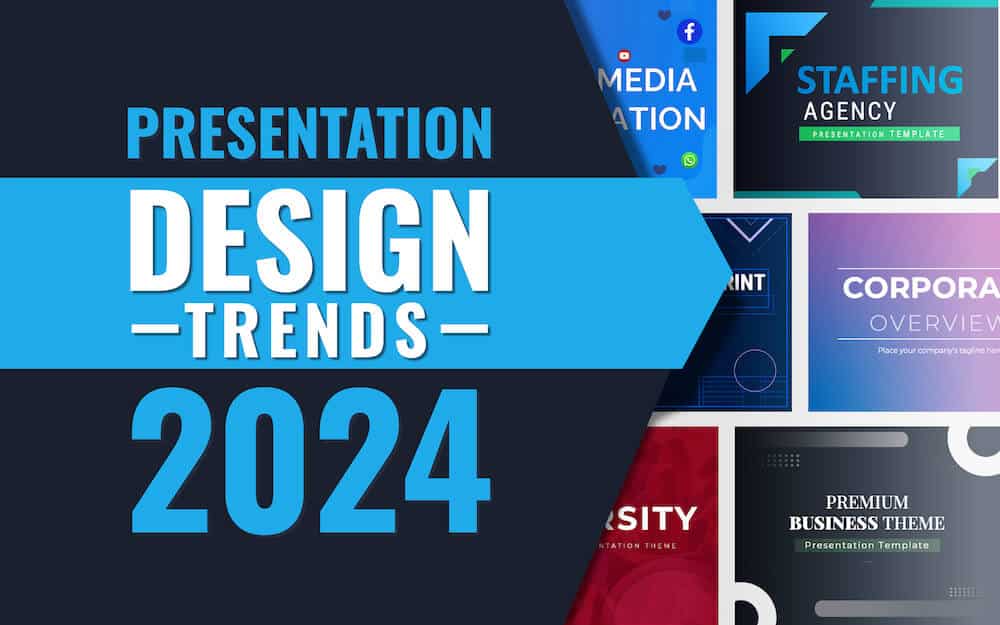
Think of a presentation that has titles of different font sizes on each slide, or the logo is placed in different corners in a few of the slides, or the color family vastly differs. How will that make you feel? The presentation will look unprofessional and incoherent to your eyes, right? That’s the power of consistency in a presentation design!
This article is a complete guide to help you create consistency in your presentation design.
What is Consistency in a Presentation Design?
Consistency in a presentation design is when you have a unified structure across all slides. Your key points have a uniform design, fonts, background, and colors that fall into a single family, and there is a general invariant look and pattern to your presentation. Follow a similar theme across your slides which will help ensure visual consistency and make the transition look connected and smooth.
Importance of Consistency in a Presentation Design
A consistent design will help your presentation flow smoothly and make it effective. Consistency does not mean that you should curb creative elements in your presentation. It will help you eliminate unnecessary oversights or unintentional chatter in your slides, as inconsistent designs can distract your audience from what you intend to say.
1. Good for Your Professional Image
A consistent presentation creates a positive first impression in your audience’s mind. Clients will be able to grasp your design elements better and listen to your message carefully without getting overwhelmed.
2. Boost for Your Brand
A professional presentation design will instill confidence in the intended stakeholders of your business and help you close more deals. Moreover, a consistent design reflects your passion for the subject and the efforts you put into your work.
3. Will Make You Look Disciplined
Presentation design isn’t just a few sets of slides that you share with your audience. It is a part of your marketing efforts to inform, inspire, and share information about your product/service. A decent presentation will boost your image in front of your audience by showcasing discipline and consistency in your work.
4. Exclusivity and Uniqueness
Consistency in your presentation designs gives a distinctive identity and uniqueness to your brand. It will also help the audience remember your message for longer.
How to Achieve Consistency in Your Presentation Design?
Here are some techniques on how to create consistency in your work –
1. Go for Colors that Communicate with Each Other
We use colors in a presentation to highlight important points and show their relatability to each other. Colors are also used in the background, images, fonts, etc., for emphasis and aesthetic appeal. Using colors (hues, shades, tints) that are monochromatic or relatable to each other will make your presentation look consistent. You can take the help of various color palettes to see which colors go well together. Go for palettes that have contrasting colors to help you emphasize your data as and when needed.
2. Be Mindful of Fonts and Texts
Consistent fonts and text will help your audience scan the information faster and understand more. Try using 2-3 font styles for your presentation, i.e., one for your headlines, one type for your subheadings, and one for the entire text body. Use white space, also known as negative space, to let your text breathe. Don’t overstuff your slides with big chunks; rather, split the texts and keep them minimal.
3. Be Consistent in Your Visual Content
Choose images and icons in such a way that it makes your slides relatable to each other and, at the same time, part of something bigger. Keep your slides by going for images that aren’t too full of material. Cleaner images will give your slides the required breathable space and make your message definitive. Similarly, go for icons with a similar design and style. To keep it simple, use icons that are relatable to your presentation theme and of the same size and style (flat, scribble, outlines).
4. Do Remember Animations and Transitions
Animations make your presentation look lively by adding eye-catching movable objects to your screen. You can use transitions and animations to highlight important content and make your presentation dynamic and captivating. However, don’t overdo both, as clumsy designs will overshadow the message of your presentation.
Use animations and transitions wisely to make your presentation look smooth, consistent, and flowing. Instead of using a mishmash of 2D and 3D illustrations, go for images and effects that are of one graphic style.
5. Keep in Mind the Alignment of Your Content
The content and structure of your slides should look consistent and relatable. Arrange your headlines in the same place on each slide so that the transition doesn’t look erratic (headlines up and down). Use grids to properly align your content. Organize the structure of your content in a way that looks constant and relevant. Go for straight shapes and forms over curved ones as it looks more coherent, aligned, and in order to the human eye.
6. Be Consistent with the Core Message of Your Presentation
Look for important theme words that relate to the core message of your presentation and build your slides around those words.
Consistency is not just in the design but also in the content of your presentation, and it will help your audience relate more to what you are saying. For example, if you are an apparel company, include theme words like affordable and quality, and incorporate icons to represent those words. Keep in mind to follow a similar structure of the content as well. Let’s say you want to present findings regarding several problems in your company, so follow a uniform pattern of the problem, analysis, and recommendations.
In a Nutshell
It is much easier for us to relate to, understand, and remember a consistent and connected design. Consistency will add the required X factor to your presentation. You can also use pre-designed PowerPoint presentation templates to give a consistent and professional look to your slideshows.
These tips will help you design a presentation that is easy on your customers’ eyes.
Remember points like breaking your information into smaller chunks and going for relatable graphics (fonts, colors, and images) for consistency and alignment. Align titles in a similar pattern, use grids when required, and keep your logo on the bottom right on each slide and you will be good to go.



